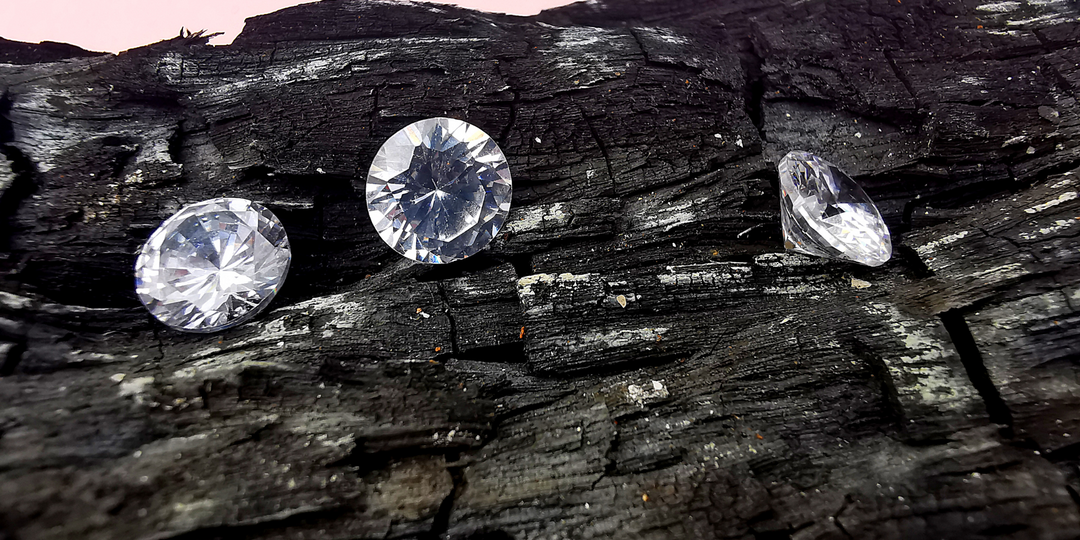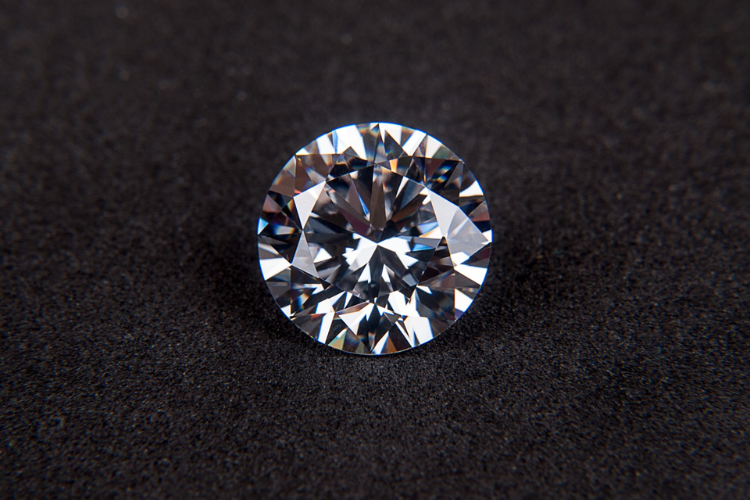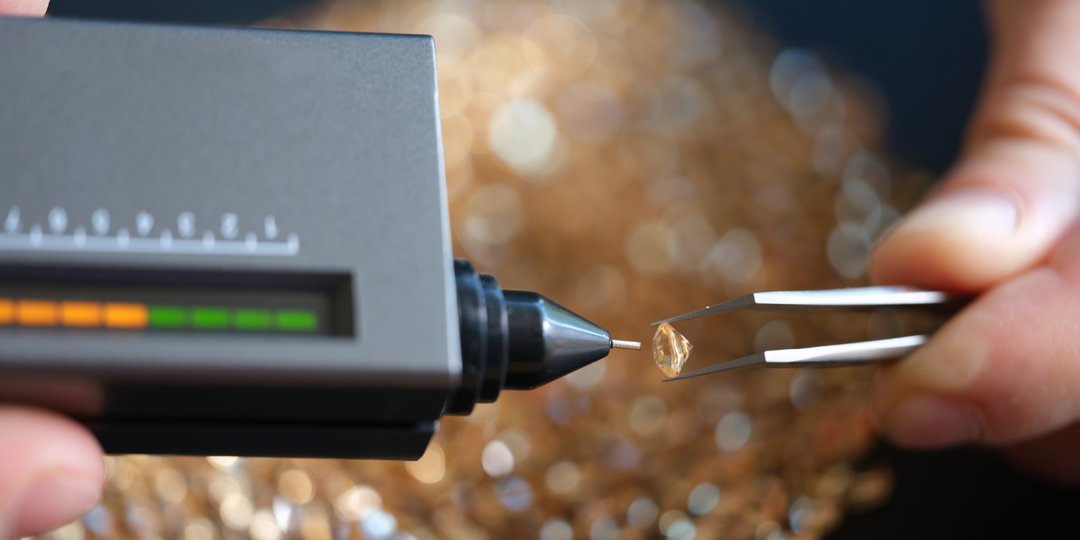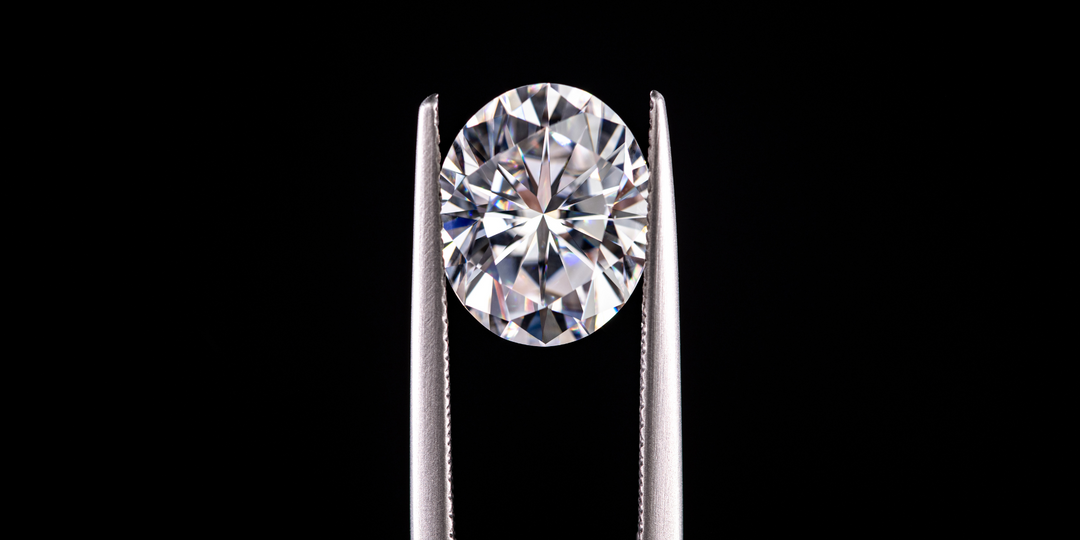Moissanite Diamonds: An Affordable Alternative to Traditional Diamonds
Are you on the hunt for an engagement ring that's not only gorgeous but also eco-friendly? Moissanite diamonds could be just what you’re looking for! In this guide, we’ll dive into everything about moissanite diamonds—from where they come from to what makes them special. You'll see why they're a fantastic alternative to traditional diamonds. Keep reading to find out how moissanite can bring sparkle to your special moments, all while being kind to the planet!
What is Moissanite?
Moissanite is a pretty fascinating gemstone made of silicon carbide (SiC). It was discovered way back in 1893 by a French chemist named Henri Moissan, who found it in a meteorite crater in Arizona. At first, he thought he had stumbled upon diamonds, but later realized he had found something new—so he named it moissanite in his honor!
Now, naturally occurring moissanite is super rare; you’ll mostly find it in meteorites and rocks from the upper mantle. Because of how scarce it is, almost all the moissanite used in jewelry today is lab-created. This means we get high-quality gemstones that are not only affordable but also eco-friendly!
One of the coolest things about moissanite is its brilliance and fire—it often outshines diamonds! Plus, it’s durable, ranking 9.25 on the Mohs scale, making it perfect for everyday wear. With all these amazing qualities and its ethical production, it’s no wonder moissanite is becoming such a popular alternative to traditional diamonds!
Moissanite vs. Traditional Diamonds Key Differences
When comparing moissanite to traditional diamonds, several key differences stand out. Here’s a differentiation table highlighting the key differences between Moissanite and Traditional Diamonds:
| Feature | Moissanite | Traditional Diamonds |
|---|---|---|
|
Composition (The chemical makeup of a gemstone) |
Moissanite is made of silicon carbide, a compound of silicon and carbon. | Traditional diamonds are composed of pure carbon arranged in a crystal lattice. |
|
Origin (Where the gemstone comes from) |
Moissanite is mostly lab-created, ensuring a consistent supply. | Diamonds can be natural (mined) or lab-grown, with natural diamonds being rarer. |
|
Hardness (Resistance to scratching, rated on the Mohs scale) |
Moissanite scores 9.25 on the Mohs scale, making it very hard and durable. | Diamonds are the hardest known natural material, scoring a perfect 10 on the Mohs scale. |
|
Refractive Index (How much light bends as it passes through the gemstone) |
Moissanite has a refractive index of 2.65 to 2.69, contributing to its brilliance. | Diamonds have a refractive index of 2.42, giving them their characteristic sparkle. |
|
Brilliance (How much light a gemstone reflects) |
Moissanite has higher dispersion, creating a rainbow-like sparkle known as fire. | Diamonds have high brilliance but less fire compared to Moissanite. |
|
Durability (How well a gemstone can withstand wear and tear) |
Moissanite is very durable and suitable for daily wear. | Diamonds are extremely durable and are the hardest known natural material. |
|
Color (The hue of the gemstone) |
Moissanite is typically colorless but can show slight yellow or gray tints in larger sizes. | Diamonds can range from colorless to various shades, graded from D (colorless) to Z (light color). |
|
Cost (The price of the gemstone) |
Moissanite is generally much less expensive than traditional diamonds. | Traditional diamonds are more expensive, especially those of high quality. |
|
Ethical Concerns (Environmental and social impact of mining or producing the gemstone) |
Moissanite is usually lab-created, minimizing environmental and ethical issues. | Traditional diamonds can have ethical concerns related to mining practices, though lab-grown options are available. |
|
Cultural Value (Shared beliefs and practices around the gemstone) |
Increasingly popular, but less traditional than traditional diamonds. | Long-standing symbol of love and commitment. |
Why Choose Moissanite as an Alternative to Diamonds?
Moissanite has gained popularity as a stunning alternative to diamonds, offering several compelling advantages:
1. Affordability
- Big Savings: Moissanite is way more budget-friendly than natural diamonds, especially when you're looking at larger stones or higher-quality grades. This means you can score a bigger, more stunning stone without breaking the bank!
2. Exceptional Brilliance
- Shine Bright: Moissanite is known for its incredible sparkle and brilliance, often outshining diamonds with its fire and scintillation. Its unique optical properties are what give it that wow factor!
3. Durability
- Built to Last: Moissanite ranks 9.25 on the Mohs hardness scale, making it super tough and scratch-resistant. It can handle daily wear and tear, so your jewelry will stay beautiful for years to come.
4. Ethical and Sustainable
- Good for the Planet: Moissanite is lab-created, which means you don’t have to worry about the ethical issues that come with diamond mining. It's a more sustainable option that helps reduce environmental impact.
5. Unique Characteristics
- Rainbow Magic: You’ll often see a stunning rainbow effect when moissanite is hit by light, adding a captivating and unique touch to your jewelry.
6. Variety of Colors
- More Than Just White: While white moissanite is the most popular choice, you can also find it in a range of colors like yellow, green, pink, and blue. This gives you the chance to pick a stone that perfectly matches your style!
Types of Moissanite Engagement Rings
Moissanite engagement rings are super popular for a bunch of reasons: they shine bright, are durable, and won’t break the bank. Here are some of the top styles you might want to check out:
1. Solitaire Moissanite Rings
These solitaire moissanite rings have a single moissanite stone that steals the show. If you love a classic, timeless design, this one’s for you! The simplicity highlights the stone’s sparkle, making it a stunning choice for a diamond engagement ring.
2. Halo Moissanite Rings
Picture a gorgeous moissanite stone in the center, surrounded by a circle of smaller stones. That’s the halo moissanite rings! It amps up the sparkle and makes the center stone look even bigger. Plus, it can be modern or vintage-inspired, so there’s something for everyone.
3. Vintage Moissanite Rings
If you dig the charm of yesteryears, vintage rings are inspired by styles from the past—think Art Deco, Victorian, or Edwardian. They often come with lovely details like milgrain and filigree, giving them a romantic vibe. Perfect for those who appreciate a bit of history!
4. Three-Stone Moissanite Rings
These Three-stone rings feature a central stone flanked by two smaller ones, symbolizing the past, present, and future of your relationship. It’s such a meaningful choice! You can mix and match the sizes of the stones to fit your style.
5. Pave Moissanite Rings
If you love sparkle, pave rings are for you! They’re decorated with tiny moissanite stones set closely together on the band, creating a continuous glitter. It can also make the center stone look bigger, adding that extra oomph!
6. Bezel-Set Moissanite Rings
For a modern twist, consider a bezel-set moissanite ring. Here, the moissanite stone is encircled by a metal rim, which keeps it secure. This design is great for active lifestyles since it protects the stone really well. You can go for a sleek contemporary look or add some vintage flair.
7. Cathedral Moissanite Rings
These cathedral rings have beautiful arches of metal that rise up to support the center stone, kind of like the arches in a cathedral. They add a touch of height and elegance, making the center stone pop. If you're after a dramatic and sophisticated look, this style is a fantastic choice!
Factors to Consider When Buying Moissanite
When buying moissanite, several factors should be considered to ensure you get the best quality and value for your purchase:
- Brilliance and Fire: Moissanite is super popular for its amazing sparkle! It reflects light so beautifully that it outshines diamonds with a higher refractive index (2.65), giving off more dazzling rainbow flashes.
- Durability: If you're looking for something tough, moissanite has got you covered with a 9.25 rating on the Mohs scale of hardness. It’s super durable, perfect for everyday wear, and only second to diamonds when it comes to hardness, so you don’t have to worry about scratches or chips.
- Color: Moissanite comes in different color grades, ranging from colorless to near-colorless. The top pick is the colorless grade (D-E-F) since it looks almost identical to a diamond. If you’re into a slightly warmer tone, the near-colorless stones (G-H-I) are also a great choice!
- Cut: The cut really makes a difference in how sparkly Moissanite is. A well-cut stone maximizes light reflection, boosting that gorgeous sparkle. You can find popular cuts like round, oval, cushion, and princess.
- Clarity: Clarity is all about how clear the stone is. High-quality moissanite has fewer inclusions, making it look stunning. Most of them are graded as “eye-clean,” which means you won’t see any flaws without a magnifying glass.
- Carat Weight: Moissanite comes in various carat weights. Bigger stones make a statement, but they do come with a higher price tag. So, pick a carat weight that suits your budget and style!
- Price: One of the best things about moissanite is how affordable it is compared to diamonds. You get similar beauty at a fraction of the price, making it a fantastic option if you’re watching your budget!
By considering these factors, you can make an informed decision and select a moissanite stone that meets your preferences and needs.
How Expensive is Moissanite Compared to Diamonds?
Here’s a comparison table highlighting the price differences between moissanite and diamonds:
| Aspect | Moissanite | Diamond |
|---|---|---|
| 1-Carat Price Range | $300 - $600 | $2,000 - $20,000+ |
| Factors Influencing Price | Quality, Cut | Carat, Cut, Color, Clarity |
| Affordability | More Affordable | Generally More Expensive |
| Budget Impact | Budget-Friendly | High Investment Required |
| Value for Money | High Value | High Cost, High Value |
Moissanite is significantly more affordable than diamonds, making it a popular choice for those looking for a budget-friendly alternative without compromising on brilliance and durability.
How to Care for Your Moissanite Jewelry
Moissanite, a stunning and durable gemstone, requires minimal care to maintain its brilliance. Here are some tips:
Routine Cleaning:
- Gently wash your moissanite jewelry with warm soapy water and a soft-bristled brush.
- Rinse thoroughly and dry with a microfiber cloth.
- Avoid harsh chemicals like chlorine, ammonia, and ultrasonic cleaners.
Storage:
- Store your moissanite jewelry in a soft pouch or jewelry box to prevent scratches.
- Separate pieces to avoid rubbing against each other.
- Remove jewelry before engaging in strenuous activities or showering.
Professional Cleaning:
- For deeper cleaning or if your jewelry has accumulated dirt or oils, consider taking it to a professional jeweler.
By following these simple steps, you can ensure that your moissanite jewelry remains beautiful and sparkling for years to come.
Conclusion
Moissanite diamonds are a fantastic and eco-friendly alternative to traditional diamonds! They shine brilliantly and are super durable without breaking the bank. Moissanite engagement rings let couples express their love in a unique and meaningful way. Whether you're into sustainable shopping, love jewelry, or are an engaged couple on the hunt for the perfect ring, moissanite is definitely worth a look.
Ready to dive into the sparkling world of moissanite? Check out our website to browse our stunning collection of moissanite engagement rings and find the perfect piece to celebrate your love!




